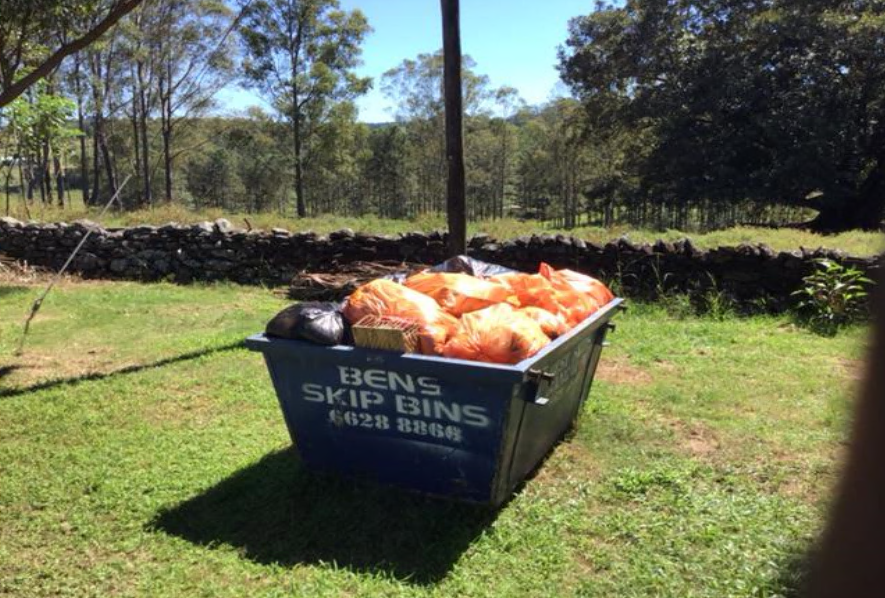Choosing the Right Recycled Aggregates for Your Project

Selecting the right recycled aggregates serving the Ballina area starts with knowing what your project needs and how material choices affect performance. North Coast Recycling supports builders, civil crews, and landscapers with practical guidance on specification, testing, and fit-for-purpose selection. This guide outlines how these materials are made, how quality is verified, and where each grade works best so you can order with confidence and achieve consistent results.
Why Recycled Aggregates Matter for Modern Builds
It helps to understand why these materials are now a mainstream option. This perspective makes it easier to weigh cost, performance, and sustainability during procurement.
- Material efficiency: Using recycled aggregates supports circular use of resources, reducing the demand for virgin quarried stone and limiting landfill.
- Cost control: Supply can be competitive on price due to local sourcing and fewer long-haul transport kilometres.
- Compliance: When the material is processed to recognised specifications, it can meet stringent engineering and council requirements.
- Performance: With the right grading and compaction, you can achieve strong, durable pavement layers and stable bedding that perform under load.
How Collection, Sorting, and Crushing Create Quality Material
A clear picture of how material is produced gives you confidence in the result. The path from demolition waste to a tested construction product follows a controlled process.
- Collection: Concrete, brick, and similar materials are collected from construction and demolition sites. Contaminants like timber, plastic, and plasterboard are separated at source where possible.
- Sorting: At the facility, a combination of manual picking and mechanical screening removes remaining contaminants and isolates suitable feedstock streams.
- Crushing: Jaw and impact crushers break down material to target sizes. Multiple crushing stages help achieve consistent particle shape and grading for recycled aggregates.
- Screening and blending: Screens sort the crushed material into specified sizes. Blending adjustments are made to match grading envelopes for different end uses.
- Stockpiling and handling: Segregated stockpiles and good yard practices help maintain cleanliness, moisture control, and product consistency.
Understanding Standards and Quality Control
Knowing which tests apply and what the results mean helps you specify the right product and approve deliveries. Quality control is central to reliable performance.
- Applicable specs: Project documentation often references Australian Standards for aggregates, along with state or council specifications for road base and select fill.
- Typical testing: Sieve analysis confirms grading. Los Angeles abrasion and similar durability tests indicate strength. Contaminant checks confirm limits on lightweight debris, organics, and other foreign matter.
- Durability and exposure: Where materials encounter coastal air or regular moisture, testing for chloride and sulphate content can be relevant for steel-adjacent works or sensitive environments.
- Consistency: Batch-to-batch uniformity reduces variations in compaction and drainage. Ask for recent test summaries that show trend lines for recycled aggregate results.
- Documentation: Keep certificates of compliance and delivery dockets with your lot records so you can demonstrate that specification and traceability requirements were met.
Types of Recycled Aggregates and Where They Work Best
Matching material type to function is the key to long-term performance and fewer call-backs. The categories below outline common uses and what to look for in each case. You can explore current sizing and availability on our
recycled aggregate products page.
Introduction to Fit-For-Purpose Choices
You will see variations in grading, shape, and fines content across recycled aggregates. These differences drive performance in road bases, drainage layers, and structural bedding.
Road Base
Well-graded base materials provide strength once compacted. They suit driveways, car parks, footpaths, and pavement sub-layers.
- Look for a dense grading with sufficient fines for binding.
- Target compaction to the specified density to achieve design stiffness.
- Verify that the material meets the nominated local road authority grading envelope.
Drainage Aggregate
Open-graded stone supports rapid water movement around foundations, behind retaining walls, or in trench drains.
- Choose a clean, low-fines product to prevent clogging.
- Confirm the nominal size suits the pipe slotting and geotextile selected.
- Place with care to protect filter fabrics and prevent fines migration.
Pipe Bedding
Uniform and stable bedding helps protect pipes from point loads and movement.
- Select a consistent particle size range that compacts without sharp edges.
- Follow the engineer’s detail for thickness, compaction, and cover.
- Check that the material is free of contaminants that could affect long-term stability.
General Fill and Capping
Fill materials help raise levels, shape subgrades, and cap soft ground before pavement layers go down.
- A broader grading can help achieve stability and compaction.
- Where a capping layer is specified, ensure it meets density and strength requirements prior to base placement.
- Proof-roll and rework soft spots to achieve uniform support.

Landscaping Stone
Decorative stone can provide both function and finish in garden beds, paths, and edging.
- Confirm size and colour consistency from the nominated stockpile.
- Use a suitable geotextile separation layer to minimise contamination from underlying soils.
- Consider edging details that contain the stone in high-traffic areas.
How to Choose the Right Option for Your Project
A simple checklist approach can streamline selection and documentation while aligning your choice with the design intent. Start with the specification, then consider supply and buildability factors.
- Confirm function and load: Identify whether the layer must carry vehicles, support slabs, drain water, or provide protection. The function drives grading choice for recycled aggregates.
- Match grading to role: Dense-graded bases need fines for binding, while drainage layers need clean, open-graded stone.
- Review test data: Ask for recent lab results that demonstrate compliance for the nominated material. Where relevant, check chloride and sulphate results for recycled aggregate used near steel or sensitive elements.
- Consider constructability: Think about compaction effort, moisture conditioning, and the equipment available on site.
- Plan for consistency: Confirm that the supplier can deliver the same grading throughout the project to avoid variability.
- Document approvals: Record the selected product, test data, and on-site verification checks to streamline inspections.
Estimating Quantity, Delivery, and On-Site Handling
Getting the right amount of material to the site, in good condition, is as important as choosing the correct grade. A few practical steps can reduce waste and avoid rework.
- Calculate volumes with allowances: Apply a compaction factor where relevant and include a sensible wastage margin. This keeps recycled aggregate orders aligned to real needs.
- Programme deliveries: Stagger trucks to match placement speed so you can maintain compaction windows and avoid stockpile congestion.
- Protect stockpiles: Keep materials on firm, drained ground and separated from soils. Cover open-graded materials during rain to maintain consistent moisture.
- Manage moisture: Condition the dense-graded base to optimum moisture content before compaction to reach target density efficiently.
- Inspect on arrival: Check each load for visible contaminants, grading consistency, and moisture. Reject or quarantine questionable loads until assessed.
Real-World Outcomes With Recycled Materials
Seeing how similar projects applied these materials can help you refine your own specification and methodology. Explore local case studies, pavement builds, and civil works to benchmark details and results. You can review examples of our construction recycling projects in our
gallery.
< https://www.northcoastrecycling.com.au/construction-recycling-projects > These references show where recycled aggregates have delivered strength, drainage, and durability on time and within budget.
Quality, Compliance, and Risk Management
Beyond the immediate material choice, a quality mindset reduces risk throughout construction. Small steps early can prevent costly fixes later.
- Pre-approval: Share proposed material data sheets with the superintendent or certifier for early acceptance.
- Lot control: Assign lots and record compaction tests, thickness checks, and visual inspections for each placement area.
- Weather planning: Adjust sequencing and protection measures for wet conditions to maintain workability and compaction.
- Interface checks: Coordinate with services, geotextiles, and edge restraints so layers interact as designed.
- Close-out records: Keep delivery dockets and test reports together to support handover and future maintenance queries.
Balancing Sustainability With Performance
Responsible sourcing and strong technical outcomes can sit side by side. The right approach lets you meet environmental goals without sacrificing durability.
- Carbon and cost: Local supply often lowers embodied transport emissions while helping budgets.
- Design intent: If the design calls for a specific grading or performance metric, choose the product that hits the target rather than chasing the lowest price.
- Long-term view: Good performance reduces maintenance, which further lowers environmental and financial costs over the life of the asset.
- Communication: Early alignment between designer, contractor, and supplier ensures recycled aggregate selection fits the project’s success criteria.
From Specification to Site Success
Turning a well-chosen product into a well-built layer requires a few disciplined steps on site. Keep the basics front of mind during execution.
- Subgrade preparation: Proof-roll and trim to levels. Fix soft spots before placing any material.
- Layer thickness: Place in lifts that match the compaction equipment’s capability. Thin, consistent layers help lock in density.
- Compaction verification: Use the nominated method, confirm target density, and adjust moisture content as needed.
- Protection and sequencing: Keep finished layers clean and protect them from heavy trafficking until the next layer is ready.
Finding Detailed Specs and Stock Availability
If you want to dive into sizing, grading ranges, and what is currently in stock, check the product pages before you finalise documents or place an order. Having this information at hand supports accurate take-offs and clear site instructions for recycled aggregates.
Get Your Recycled Aggregates Today!
If you are planning with recycled aggregates serving the Ballina area, North Coast Recycling is ready to help you match specification, performance, and delivery timing. For practical guidance on grading, test data, and availability, call
02 6628 8866. Let’s line up the right product for your build, lock in delivery windows, and keep your project moving with confidence.


